Explore William Golding’s timeless novel with comprehensive PDF study guides‚ offering insights into themes‚ characters‚ and literary devices‚ perfect for deeper analysis and educational purposes.
Overview of the Novel
Lord of the Flies‚ written by William Golding‚ is a gripping tale of survival and human nature. Stranded on a remote island after a plane crash‚ a group of British boys attempt to govern themselves‚ revealing the finer aspects of civilization and the darker instincts of savagery. As the story unfolds‚ the boys’ behavior evolves from orderly cooperation to chaotic conflict‚ highlighting themes of power‚ fear‚ and morality. The novel explores how isolation and the absence of adult supervision lead to a descent into primal behavior‚ questioning the inherent goodness of humanity. Available in PDF study guides‚ the novel remains a cornerstone of literary analysis and educational resources.
Author Background: William Golding
William Golding (1911–1993) was a renowned British novelist‚ playwright‚ and poet‚ best known for his debut novel‚ Lord of the Flies. Born in Cornwall‚ England‚ Golding developed a passion for literature early in life. He initially pursued natural sciences but later shifted to English literature. Before becoming a full-time writer‚ he worked as a teacher and actor. His experiences in the Royal Navy during WWII profoundly influenced his writing‚ particularly his exploration of human nature. Golding’s works often delve into themes of morality‚ savagery‚ and societal structures. In 1983‚ he was awarded the Nobel Prize in Literature‚ solidifying his legacy as a literary giant. His works‚ including Lord of the Flies‚ remain widely studied and are available in PDF study guides for educational purposes.
Historical Context of the Novel
Lord of the Flies‚ written by William Golding and published in 1954‚ is deeply rooted in the post-World War II era. The novel reflects Golding’s experiences in the Royal Navy and his observations of human nature during wartime. The historical context of the 1950s‚ marked by Cold War tensions and societal fears‚ influenced the novel’s exploration of civilization‚ savagery‚ and power dynamics. Golding’s work challenged the optimistic views of humanity prevalent at the time‚ offering a darker perspective on human behavior. The novel’s themes resonated with a world grappling with the aftermath of global conflict and the rise of totalitarian regimes‚ making it a timeless commentary on human society. PDF study guides often highlight these historical connections‚ providing deeper insights into the novel’s relevance.
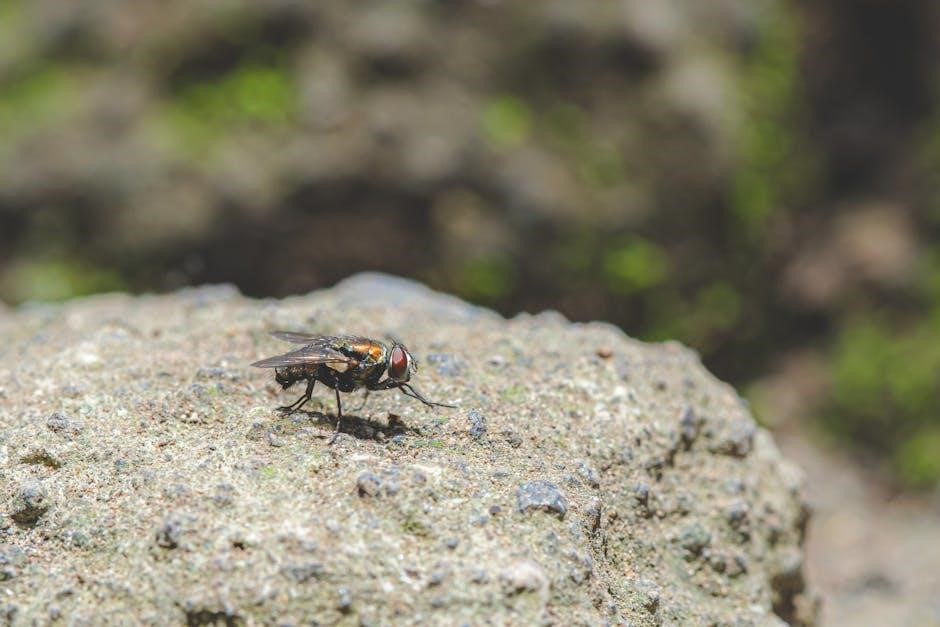
Themes in Lord of the Flies
Lord of the Flies explores themes of human nature‚ civilization vs. savagery‚ fear‚ morality‚ and power. These themes are central to the novel’s exploration of societal breakdown and are extensively analyzed in PDF study guides for deeper understanding.
The Nature of Humanity
William Golding’s Lord of the Flies explores the inherent darkness within humanity‚ revealing how societal constraints mask primal instincts. Through the boys’ descent from order to chaos‚ the novel highlights humanity’s capacity for aggression‚ fear‚ and tribalism. PDF study guides analyze how Golding uses the island as a microcosm of society‚ illustrating the fragility of civilization and the ease with which individuals revert to savagery. This theme underscores the idea that humanity’s true nature is shaped by primal desires rather than moral ideals‚ offering a bleak yet profound commentary on human behavior in the absence of societal norms.
Civilization vs. Savagery
In Lord of the Flies‚ the conflict between civilization and savagery is central‚ as the boys’ behavior evolves from orderly to primal. The conch shell‚ a symbol of democracy and civility‚ loses its power as fear and chaos dominate. Jack’s obsession with hunting embodies the descent into savagery‚ while Ralph’s efforts to maintain order reflect a fading civilized ethos. The novel critiques human nature‚ suggesting that societal norms are fragile and easily discarded without authority. This duality is a recurring theme in Golding’s work‚ explored in-depth in PDF study guides and analyses of the text.
Power and Leadership
The struggle for power and leadership in Lord of the Flies is a pivotal theme. Ralph‚ elected as the democratic leader‚ initially symbolizes order and responsibility‚ while Jack’s authoritarianism and desire for control drive the group toward savagery. The novel explores how leadership styles influence group dynamics‚ with Ralph advocating for collective well-being and Jack prioritizing hunting and power. PDF study guides delve into how Golding uses these characters to illustrate the corrupting nature of power and the importance of effective governance in maintaining societal structures. This theme remains a critical focus in analyses of the novel.
Fear and Its Consequences
Fear plays a central role in Lord of the Flies‚ driving the boys’ actions and decisions. The mysterious “beast” ignites paranoia‚ leading to irrational behavior and violence. As fear escalates‚ the group’s cohesion fractures‚ and savagery emerges. The novel highlights how fear manipulates individuals‚ causing them to abandon reason and morality. PDF study guides analyze how Golding uses fear to explore the breakdown of civilization and the rise of primal instincts. This theme underscores the destructive power of unchecked fear and its impact on leadership‚ morality‚ and societal structures‚ making it a pivotal element of the story.
Morality and Ethics
Morality and ethics in Lord of the Flies are tested as the boys confront primal instincts versus civilized norms. Initially‚ they adhere to moral codes‚ but isolation and fear erode these values. The novel explores how ethical decision-making crumbles when societal constraints are removed‚ revealing the inherent duality of human nature. PDF study guides delve into Golding’s portrayal of moral decay‚ highlighting characters like Simon‚ who embodies inherent goodness‚ and Jack‚ who symbolizes the descent into amorality. This theme serves as a stark reminder of humanity’s fragile ethical framework‚ making it a central focus of the novel’s commentary on human society.
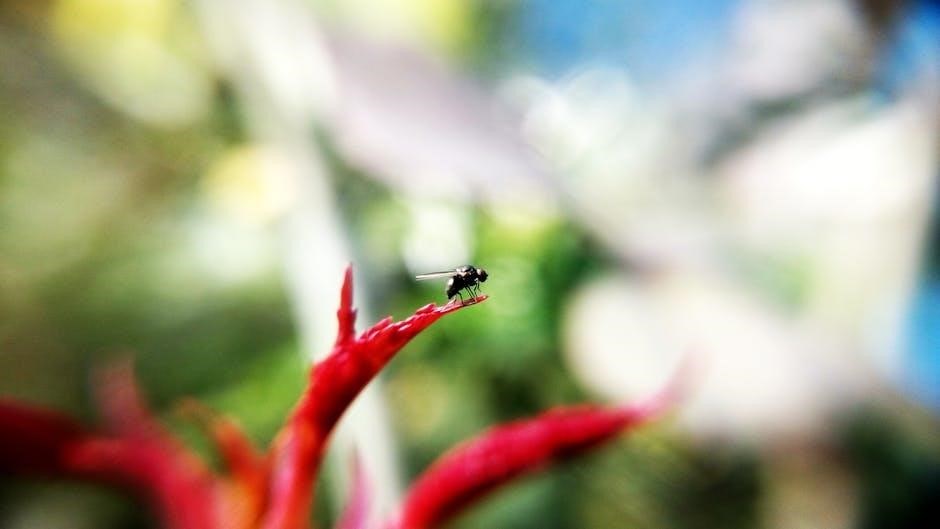
Main Characters in Lord of the Flies
Meet Ralph‚ the democratic leader; Jack‚ driven by hunting obsession; Piggy‚ the voice of reason; Simon‚ the tragic visionary; and the vulnerable “littleuns”‚ embodying innocence and fear.
Ralph: The Democratic Leader
Ralph‚ the elected leader‚ embodies democracy and order‚ striving to maintain civility. With the conch shell‚ he symbolizes authority and fairness‚ prioritizing shelter and rescue. His leadership initially unites the group‚ but Jack’s rising influence and fear of the beast erode his control. Ralph’s optimism fades as chaos prevails‚ revealing the fragility of civilized behavior. His eventual realization of humanity’s true nature underscores Golding’s critique of society‚ highlighting Ralph’s tragic transition from hope to despair‚ making him a pivotal character in the novel’s exploration of human morality and governance.
Jack: The Hunting Obsession
Jack Merridew’s descent into savagery is driven by his fixation on hunting‚ symbolizing primal instincts. His leadership of the choir evolves into a power struggle‚ challenging Ralph’s authority. Jack’s obsession with killing pigs reflects his desire for control and dominance‚ leading to tribal behavior. The hunt becomes a ritual‚ fostering fear and paranoia‚ as Jack’s group resorts to violence. His transformation mirrors the collapse of civilization‚ highlighting the thin line between order and chaos‚ and serving as a contrast to Ralph’s democratic ideals in Golding’s exploration of human nature and societal breakdown.
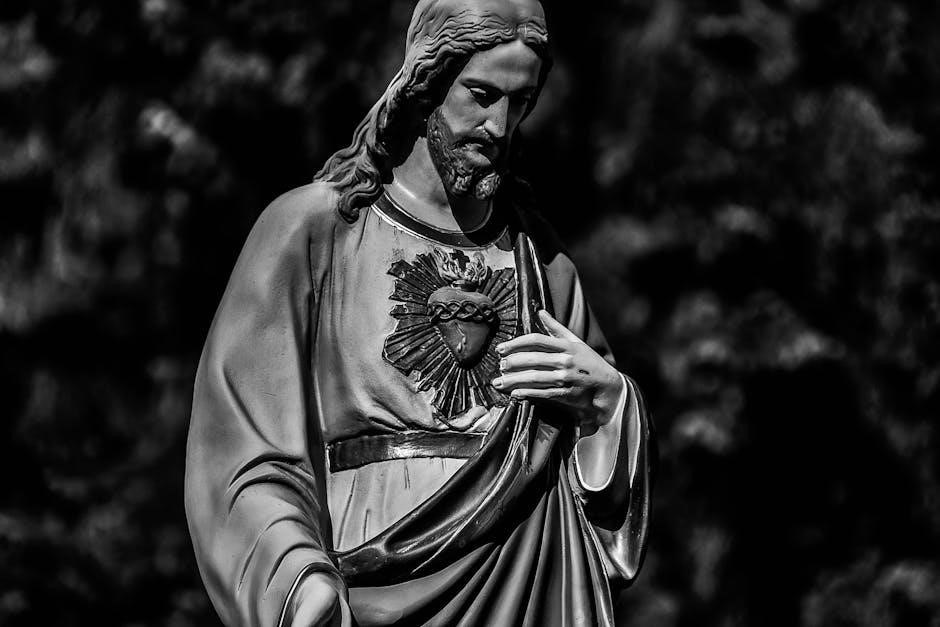
Piggy: The Voice of Reason
Piggy‚ the intelligent and rational thinker‚ represents wisdom and civility. Despite his physical limitations‚ he provides logical solutions and advocates for democracy. His glasses symbolize clarity and knowledge‚ essential for the boys’ survival. Piggy’s loyalty to Ralph and his commitment to maintaining order highlight his moral integrity. His tragic demise signifies the loss of reason and the rise of savagery‚ underscoring Golding’s critique of human nature. Through Piggy‚ the novel illustrates the importance of intellect and ethics in a societal framework‚ contrasting sharply with the primal instincts that dominate the island.
Simon: The Epiphany and Sacrifice
Simon‚ the quiet and introspective boy‚ experiences a profound epiphany in the novel. He discovers the true nature of the “beast” and realizes it is merely a dead pilot‚ symbolizing the externalization of fear. His understanding that “the beast is us” reveals the inherent darkness within humanity. Tragically‚ Simon’s attempt to share this truth is met with violence‚ as he is killed by the other boys in a frenzied ritual. His sacrifice underscores the themes of innocence lost‚ the dangers of fear-driven behavior‚ and the devastating consequences of unchecked savagery‚ making him a pivotal figure in the narrative.
The “Littleuns”: Innocence and Vulnerability
The “littleuns‚” the youngest boys on the island‚ represent innocence and vulnerability. They are often overlooked in decision-making and rely on others for protection and guidance. Their fear of the “beast” symbolizes the primal anxieties of childhood‚ while their dependence on the older boys highlights the collapse of adult authority. As chaos escalates‚ the littleuns become increasingly neglected‚ their needs unmet‚ and their innocence slowly eroded by the harsh realities of the island. Their vulnerability serves as a poignant reminder of the fragility of childhood in the absence of civilization and proper governance.

Symbolism in Lord of the Flies
Golding’s novel is rich in symbols‚ such as the conch shell representing order‚ the beast embodying fear‚ and fire symbolizing hope and destruction‚ enhancing themes and depth.
The Conch Shell: Symbol of Order
The conch shell is a powerful symbol of order and democracy in Lord of the Flies. Found by Piggy‚ it is used to call meetings and ensure only one person speaks at a time‚ maintaining civility. The shell’s influence wanes as the boys’ behavior becomes more savage‚ reflecting the erosion of order. Its destruction symbolizes the collapse of their moral framework. In PDF study guides‚ the conch is highlighted as a key element‚ emphasizing its role in representing the boys’ fragile attempt at civilization and the eventual descent into chaos‚ making it a central symbol in Golding’s exploration of humanity.
The Beast: Fear and Paranoia
The Beast‚ a mysterious entity feared by the boys‚ symbolizes primal fear and paranoia in Lord of the Flies. Initially dismissed by Ralph‚ it grows into a shared terror‚ driving the group to irrational actions. The Beast’s true identity as a dead pilot is revealed late‚ showing how fear distorts reality. PDF study guides highlight the Beast as a metaphor for the unknown and the boys’ inner savagery. Its presence accelerates the group’s breakdown‚ illustrating how fear‚ once embedded‚ can lead to chaos and destruction‚ central to Golding’s exploration of human nature’s darker aspects.
Fire: Hope and Destruction
Fire in Lord of the Flies dually symbolizes hope and destruction. Initially‚ it represents the boys’ connection to civilization and a tool for rescue. However‚ as the novel progresses‚ fire becomes a force of chaos‚ destroying the island and their innocence. PDF study guides emphasize how the misuse of fire mirrors the boys’ descent into savagery. This duality underscores Golding’s theme of humanity’s capacity for both creation and destruction‚ highlighting the fragile balance between order and chaos in the absence of societal constraints.
The Island: Isolation and Microcosm of Society
The island in Lord of the Flies serves as both a physical and symbolic setting‚ isolating the boys from civilization and creating a microcosm of society. Its remote location forces the boys to govern themselves‚ revealing inherent human tendencies. PDF study guides highlight how the island mirrors societal structures‚ with the boys replicating hierarchies and power struggles. The island’s isolation amplifies primal instincts‚ showcasing humanity’s capacity for both cooperation and savagery. Through this setting‚ Golding critiques societal norms‚ illustrating how fear‚ leadership‚ and morality shape human behavior when stripped of external constraints.
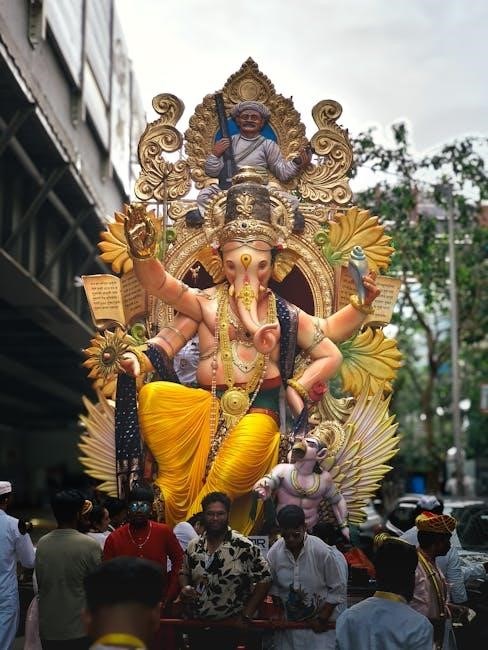
Literary Devices in Lord of the Flies
William Golding employs irony‚ foreshadowing‚ and vivid imagery to explore themes of humanity and savagery. Allegory and symbolism‚ such as the conch and beast‚ enrich the narrative depth.
Irony and Foreshadowing
The novel is rich in irony‚ particularly situational irony‚ as the boys’ descent into savagery contrasts sharply with their rescue. Foreshadowing is evident in the boys’ fear of the “beast‚” which symbolizes their inner darkness. The pig’s head‚ or “Lord of the Flies‚” hints at Simon’s tragic fate. Golding uses these devices to highlight humanity’s duality‚ emphasizing how fear and power corrupt even the innocent. The boys’ initial hope for rescue fades as their primal instincts surface‚ underscoring the novel’s bleak commentary on human nature and society. These literary tools deepen the narrative’s emotional and thematic impact.
Imagery and Description
Golding’s vivid descriptions of the island create a stark contrast between its natural beauty and the boys’ descent into chaos. The conch shell‚ initially a symbol of order‚ fades in significance as civility erodes. Imagery of the “beast” and the pig’s head on a stake evokes fear and primal instincts. The island’s transformation from a paradise to a battleground mirrors the boys’ internal decay. Golding’s use of color and weather—like the bright sun versus stormy skies—heightens tension and reflects the boys’ emotional states. These descriptive techniques immerse readers in the island’s atmosphere‚ emphasizing the novel’s themes of savagery and human nature.
Allegory and Metaphor
Lord of the Flies is rich in allegorical elements‚ with the island serving as a microcosm of society. The conch shell‚ a symbol of democracy and order‚ gradually loses its power‚ mirroring the erosion of civility. The beast represents primal fear‚ while the pig’s head‚ or “Lord of the Flies‚” symbolizes the emergence of savagery and evil. Characters like Ralph‚ Jack‚ and Piggy embody conflicting values‚ with Ralph representing democracy‚ Jack symbolizing dictatorship‚ and Piggy standing for reason. Golding uses these metaphors to explore humanity’s duality‚ highlighting how societal structures crumble without moral guidance‚ revealing innate savagery beneath the surface of civilization.
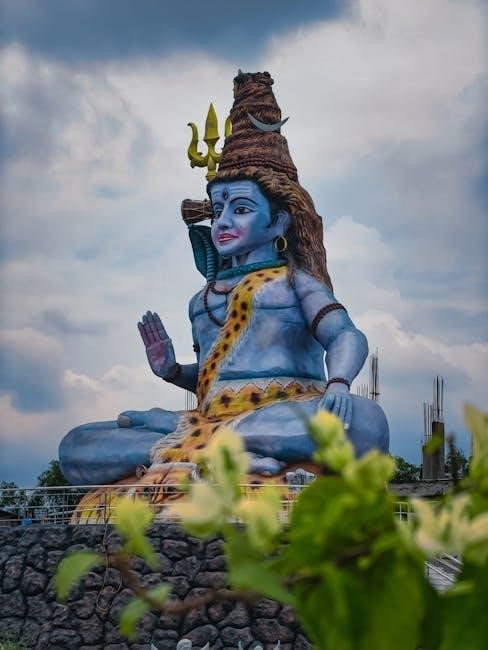
Plot Summary and Analysis
The novel follows boys stranded on an island‚ exploring their descent from hope to savagery. Fear and power struggles escalate‚ culminating in tragic consequences and a dramatic rescue.
The story begins with a plane crash‚ leaving a group of boys stranded on a deserted island. Ralph‚ the protagonist‚ discovers a conch shell‚ which becomes a symbol of order and democracy. The boys elect Ralph as their leader over Jack‚ creating immediate tension. They establish basic rules and divide responsibilities‚ with Jack focusing on hunting. The conch shell ensures everyone’s voice is heard during meetings. However‚ fear of a mysterious “beast” emerges‚ sowing seeds of paranoia. These chapters set the stage for the boys’ struggle between civilization and savagery‚ introducing key themes and conflicts that will unfold.
Chapters 4-6: Rising Tensions
In these chapters‚ the conch shell’s authority begins to wane‚ and divisions among the boys deepen. Jack’s obsession with hunting intensifies‚ leading to neglect of fire duties‚ while Ralph prioritizes rescue. The fear of the “beast” escalates‚ causing paranoia and mistrust. Tensions rise as Jack challenges Ralph’s leadership‚ exploiting fear to gain support. The group’s unity frays‚ and the island’s tranquility gives way to chaos. These chapters highlight the boys’ descent into primal behavior‚ foreshadowing the collapse of their fragile civilization and the rise of savagery.
Chapters 7-9: The Descent into Chaos
Chapters 7-9 mark a dramatic shift as the boys’ behavior becomes increasingly erratic. Jack’s tribe separates from Ralph’s group‚ leading to open conflict. The “beast” becomes a unifying fear‚ exploited by Jack to solidify his power. Simon’s discovery of the pig’s head reveals the true nature of the beast‚ but his epiphany is met with tragic consequences. These chapters illustrate the rapid disintegration of order‚ replaced by primal instincts and violence‚ highlighting the boys’ complete abandonment of civilized norms and their descent into chaos.
Chapters 10-12: The Climax and Resolution
In the final chapters‚ the novel reaches its climax with the brutal murder of Piggy and the destruction of the conch shell‚ symbolizing the collapse of order. Ralph is hunted by Jack’s tribe‚ leading to a desperate chase. The arrival of naval officers interrupts the chaos‚ forcing the boys to confront the reality of their actions. The rescue brings an end to the island’s savagery‚ but the experience leaves a lasting impact on the boys‚ underscoring the novel’s themes of humanity’s duality and the fragile nature of civilization. The resolution highlights the contrast between primal instincts and societal expectations.
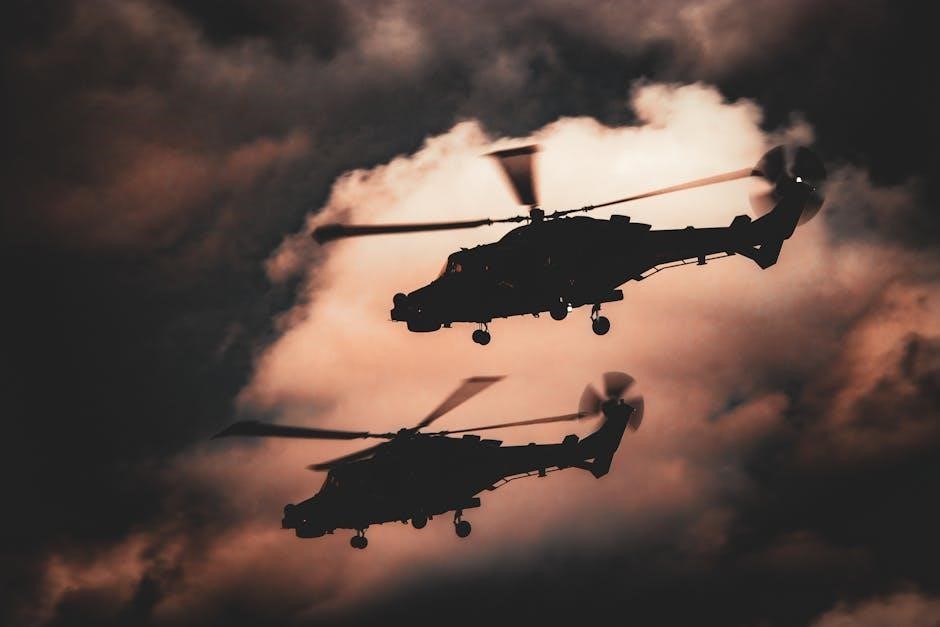
Social Commentary in Lord of the Flies
The novel critiques human society by exploring how fear drives violent actions and the impact of leadership on group behavior‚ reflecting on governance and inherent human flaws.
Critique of Human Society
William Golding’s Lord of the Flies critically examines human nature by depicting boys stranded on an island‚ where societal norms collapse. The novel highlights how fear‚ power‚ and greed lead to savagery‚ mirroring real-world societal flaws. Golding illustrates the inherent human tendency to descend into chaos without civilization’s constraints. The boys’ hierarchical systems and violent conflicts reflect societal structures and human frailties. Through the island’s isolated setting‚ Golding critiques the idea of inherent human goodness‚ suggesting civilization is a fragile veneer. The novel serves as a cautionary tale about humanity’s darker impulses and the dangers of unchecked ambition.
Impact of Fear on Behavior
Fear plays a pivotal role in shaping the boys’ actions in Lord of the Flies. The belief in a mysterious “beast” instills paranoia‚ leading to irrational decisions and violence. Jack’s obsession with hunting evolves into a desire for power‚ driven by fear of losing control. The group’s fear of the unknown fosters division and savagery‚ as they abandon civilized norms. The novel illustrates how fear erodes morality‚ turning once-innocent boys into ruthless survivors. This psychological descent underscores Golding’s critique of human vulnerability to fear’s destructive influence‚ revealing how it destabilizes order and leads to chaos.
The Role of Leadership and Governance
Leadership dynamics in Lord of the Flies highlight the importance of governance in maintaining order. Ralph’s democratic approach emphasizes collective well-being‚ while Jack’s authoritarian rule prioritizes power and control. The novel explores how leadership styles influence group behavior‚ with Ralph’s focus on building shelters and maintaining fire contrasting sharply with Jack’s hunting-centric regime. The absence of effective governance leads to chaos‚ demonstrating how leadership can either unite or divide. Golding’s portrayal of these dynamics serves as a commentary on the necessity of balanced leadership in society and the dangers of unchecked power.
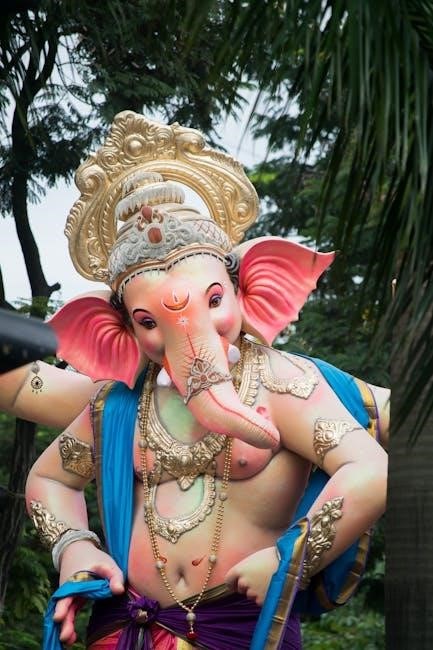
Educational Resources and Study Guides
Discover comprehensive Lord of the Flies study guides in PDF format‚ offering detailed summaries‚ character analysis‚ and thematic insights‚ perfect for academic preparation and deeper understanding.
Popular Study Guides for Lord of the Flies
SparkNotes‚ Faber and Faber‚ and York Notes are among the most popular study guides for Lord of the Flies. These resources provide detailed summaries‚ character analyses‚ and thematic insights. The SparkNotes guide is renowned for its clear explanations and study aids‚ while Faber and Faber’s edition offers direct excerpts and expert commentary. York Notes emphasizes critical thinking and exam preparation‚ making it ideal for students. Additionally‚ the Grade 9-1 GCSE English Text Guide (ISBN: 9781847620224) is widely recommended for its focused approach to key themes and assessment objectives.
PDF Availability and Educational Materials
Various PDF study guides for Lord of the Flies are available online‚ offering detailed analyses and educational resources. Faber and Faber provides abridged notes for free‚ while SparkNotes offers comprehensive summaries and quotes. Additionally‚ the Grade 9-1 GCSE English Text Guide (ISBN: 9781847620224) is widely accessible in PDF format‚ focusing on exam preparation and critical thinking. These materials are ideal for students and educators‚ providing insights into themes‚ characters‚ and literary devices. They also include chapter-by-chapter notes‚ quizzes‚ and essays to enhance understanding and analysis of the novel.
SparkNotes and Other Online Resources
SparkNotes offers a comprehensive study guide for Lord of the Flies‚ featuring detailed summaries‚ analysis‚ and quotes. This resource is available online and can be downloaded as a PDF for easy access. It includes chapter-by-chapter breakdowns‚ character analyses‚ and explanations of major themes. Additionally‚ other online platforms provide flashcards‚ quizzes‚ and interactive tools to aid in studying the novel. These resources are particularly useful for students preparing for exams or seeking a deeper understanding of Golding’s work. They complement traditional study guides‚ making them invaluable for modern learners.
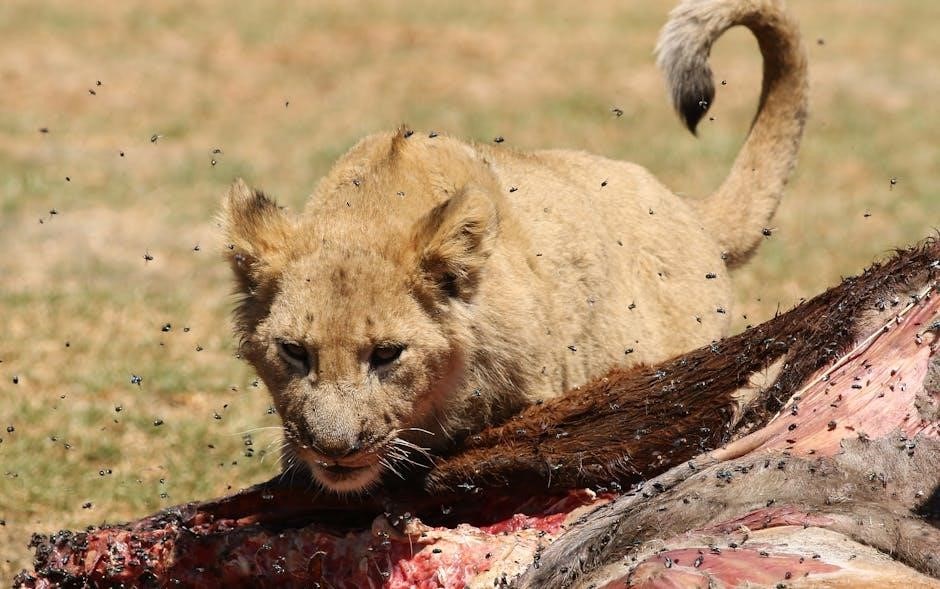
Analysis of Key Scenes
The election of Ralph as leader‚ Simon’s tragic death‚ and the final confrontation with rescuers are pivotal moments. These scenes reveal the boys’ descent into chaos and humanity’s duality‚ emphasizing the novel’s themes of power‚ morality‚ and civilization’s fragility.
The Election of Ralph as Leader
Ralph’s election as leader marks the establishment of a democratic order among the boys. The scene highlights their initial desire for civility and cooperation‚ with the conch shell symbolizing their commitment to fairness. Ralph’s leadership represents hope and the boys’ belief in rescue‚ contrasting with Jack’s emerging authoritarian ambitions. This pivotal moment sets the stage for the conflict between democracy and dictatorship‚ foreshadowing the island’s descent into chaos. The election underscores themes of power‚ governance‚ and the fragility of order‚ showcasing Golding’s exploration of human nature and societal structures.
The Death of Simon
Simon’s tragic death symbolizes the loss of innocence and the collapse of civility. While attempting to reveal the truth about the “beast‚” he is brutally killed by the boys in a frenzied ritual. This event marks a turning point‚ as the group’s fear and savagery overpower reason and morality. Simon’s death underscores the themes of paranoia‚ violence‚ and the disintegration of societal norms. Study guides‚ such as those found in Lord of the Flies PDF resources‚ emphasize this scene as a pivotal moment in the novel‚ highlighting Golding’s exploration of humanity’s darker tendencies and the devastating consequences of unchecked fear.
The Final Confrontation and Rescue
The novel concludes with Ralph’s harrowing escape from Jack’s tribe‚ seeking refuge in a desperate bid for survival. A naval officer arrives‚ halting the chaos‚ but not before the true extent of the boys’ savagery is revealed. This climactic scene contrasts civilization’s order with the island’s descent into anarchy‚ leaving Ralph in tears over the loss of innocence. Lord of the Flies PDF study guides highlight this moment as a powerful commentary on humanity’s dual nature‚ emphasizing the fragility of moral structures in the absence of societal constraints.
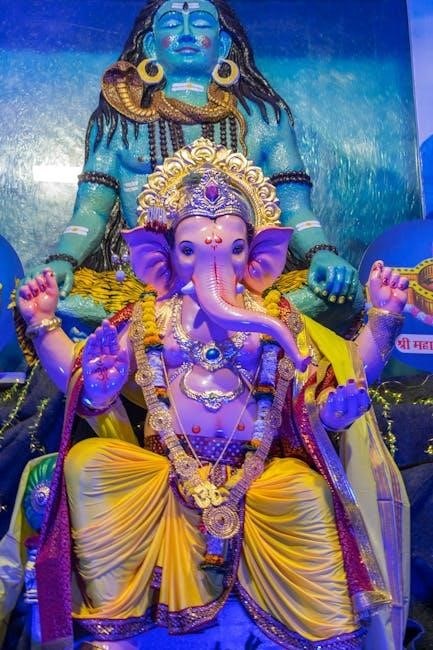



Be the first to reply